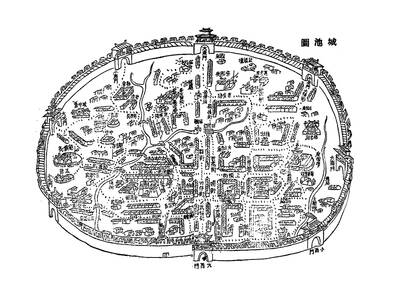It is no exaggeration to say that Leos Carax is a super-romanticist filmmaker. All three of his earliest works are visually stunning pictures in which the protagonists give up their lives for love. The film's actresses look eternally sad but extraordinarily beautiful. And he always becomes lovers with his actresses: Mireille Perrier in Boy Meets Girl, Juliette Binoche in Bad Blood and Lovers on the Bridge and Yekaterina Golubeva in Pola X, Carax's current girlfriend.
"When I made a film, it was always with, and for my lovers," said the 41 year-old French director. "I hope this will change, though," he added.
Yes, this small guy with untidy hair and a cigarette always in hand is the artist who once had Juliette Binoche madly in love with him. During the three years shooting Lovers on the Bridge, Binoche risked derailing her career by not taking any other acting projects.

Yet Leos Carax is also no doubt an odd filmmaker. When he debuted at the age of 22, he was labeled as the next big thing after the French New Wave of the 1960s, the "natural heir of Jean-luc Godard" and reminiscent of Ingmar Bergman.
His second and third films Bad Blood and Lovers on the Bridge were labeled by French critics as the New Baroque style in French filmmaking of the late 1980s and 1990s, for the glamorous visual images in the films.
In general, critics and audiences alike see Carax's films in one of two extremes, with some calling them pretentious and tedious, and others praising them as genius, ambitious and earnest. In 18 years of filmmaking he has only made four feature films. His latest, Pola X (1999) was made following a self-imposed exile of eight years.

PHOTO: GEORGE TSORNG, TAIPEI TIMES
"I traveled, I read, I fell in love and also I felt sick," said the slightly melancholy Carax, explaining what he had been doing during his years away from the director's chair.
The quiet filmmaker has cheered up a bit, however, during his stay this week in Taipei. Invited as a Director in Focus to the Taipei Film Festival, he has enjoyed the organizer's hospitality and gotten to taste his favorite Chinese cuisines.
He said he is not making a film right now and doesn't have a plan. "But maybe I will act more than I direct," said Carax. "I just proposed to Hou Hsiao-hsien (
Boy Meets Girl is a captivating black-and-white picture about heartbroken Alex (Denis Lavant), who meets Mireille (Mireille Perrier), herself recently heartbroken. It was the film's visual design and its aura of alienation that won Carax critical acclaim at Cannes Film Festival in 1984.
Bad Blood (1986) has the initial appearance of a futuristic gang film, but is, again, about a painful romance between alienated Alex and cold, beautiful Juliette Binoche who is torn between old and new love. Carax's camera gazes at actresses Binoche and Julie Delpy in different angles and photographic methods, reflection and refraction, to let their faces radiate in individual glamour. There was also the single shot of Denis Lavant dancing, jumping and running fast down the street to David Bowie's Modern Love -- truly a masterful shot.
And of course there is Lovers on the Bridge (1991), Carax's first big-budget commercial film which won Juliette Binoche a Best Actress award and also Best Cinematography and Best Editing at the European Film Awards.
In order to realize the love story between the two vagrants (Binoche and Lavant) under the bridge, Carax rebuilt a replica of Paris' entire Pont-Neuf, and also asked his actors to study the living, begging skills and street performances of the homeless.
He filmed a much richer story as a result, with emotions that were touching and convincing. The film's musical score and its visual design are as stunning as his previous works.' It is perhaps Carax's most popular film.
"The three films are a trilogy. Basically it's about a state of falling in love. A boy, by meeting the girl, falling in love with the girl, he thought he would lighten the weight of his life. He could fly up a little bit and stop falling. But sometimes the love doesn't stay and he falls deeper," said Carax.
Pola X is also a film where the protagonist falls deeper. This is a story adapted from Herman Melville's 1852 Pierre, ou les Ambiguites (P.O.L.A.). Pierre is a young privileged writer who is about to marry his beautiful girlfriend. He suddenly abandons the high life in his castle with his mother and girlfriend when his mysterious half-sister Isabelle shows up.
He takes the dark-haired vagrant Isabelle to Paris and lives a life of exile in a Paris suburb, intent on seeking and writing about the dark side of human nature. But what he finds is his own despair and destruction, not the truth.
"It is perhaps my most unfriendly film. But I feel it's my best work so far," said Carax.
Viewing the film, it is not difficult to see an echo between the film's Pierre and the filmmaker Carax.
In Carax's own words, it's a story about immaturity. "Pierre wants to save Isabelle and seek the truth. But he is too small and too immature to do so," he said. "It is a lesson for all the boys wanting to become men. So of course I feel it relates [to me]," he said.
For your information:
Lovers on the Bridge (Les Amants du Pont-Neuf) will screen on Tuesday, March 12 at 10:30am and Boy Meets Girl will screen on Saturday, March 16 at 7pm. Both films will show at the Taipei Municipal Social Education Hall located at 25 Pate Rd., Sec. 3 (
Bad Blood (Mauvais Sang) will show on Wednesday, March 13 at 10:30am at Chungshan Hall, 98 Yenping South Rd., Taipei (

May 26 to June 1 When the Qing Dynasty first took control over many parts of Taiwan in 1684, it roughly continued the Kingdom of Tungning’s administrative borders (see below), setting up one prefecture and three counties. The actual area of control covered today’s Chiayi, Tainan and Kaohsiung. The administrative center was in Taiwan Prefecture, in today’s Tainan. But as Han settlement expanded and due to rebellions and other international incidents, the administrative units became more complex. By the time Taiwan became a province of the Qing in 1887, there were three prefectures, eleven counties, three subprefectures and one directly-administered prefecture, with

It’s an enormous dome of colorful glass, something between the Sistine Chapel and a Marc Chagall fresco. And yet, it’s just a subway station. Formosa Boulevard is the heart of Kaohsiung’s mass transit system. In metro terms, it’s modest: the only transfer station in a network with just two lines. But it’s a landmark nonetheless: a civic space that serves as much more than a point of transit. On a hot Sunday, the corridors and vast halls are filled with a market selling everything from second-hand clothes to toys and house decorations. It’s just one of the many events the station hosts,

Two moves show Taichung Mayor Lu Shiow-yen (盧秀燕) is gunning for Chinese Nationalist Party (KMT) party chair and the 2028 presidential election. Technically, these are not yet “officially” official, but by the rules of Taiwan politics, she is now on the dance floor. Earlier this month Lu confirmed in an interview in Japan’s Nikkei that she was considering running for KMT chair. This is not new news, but according to reports from her camp she previously was still considering the case for and against running. By choosing a respected, international news outlet, she declared it to the world. While the outside world

Through art and storytelling, La Benida Hui empowers children to become environmental heroes, using everything from SpongeBob to microorganisms to reimagine their relationship with nature. “I tell the students that they have superpowers. It needs to be emphasized that their choices can make a difference,” says Hui, an environmental artist and education specialist. For her second year as Badou Elementary’s artist in residence, Hui leads creative lessons on environmental protection, where students reflect on their relationship with nature and transform beach waste into artworks. Standing in lush green hills overlooking the ocean with land extending into the intertidal zone, the school in Keelung